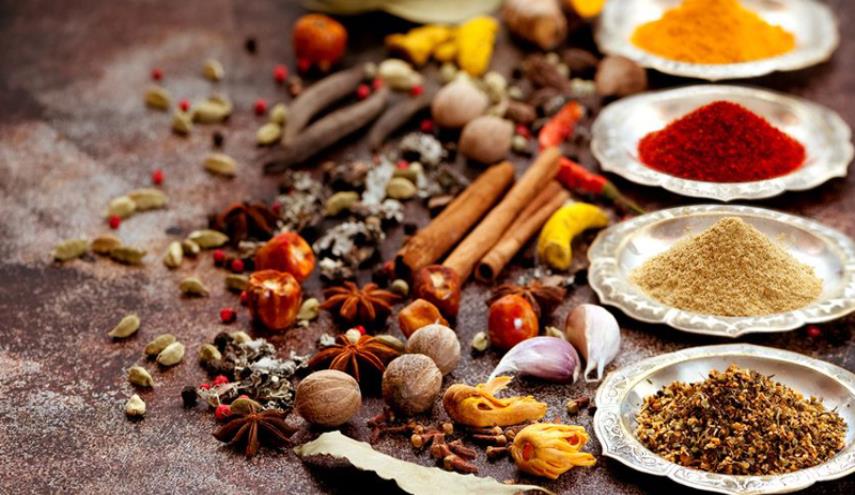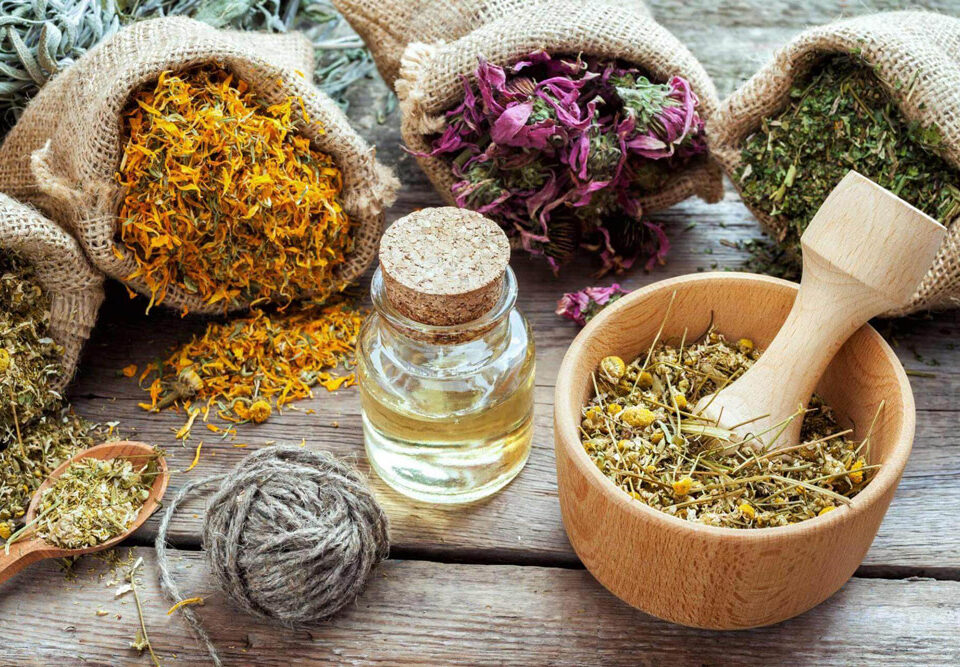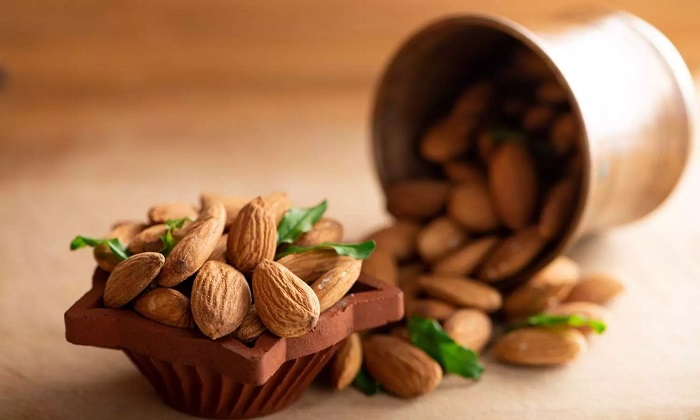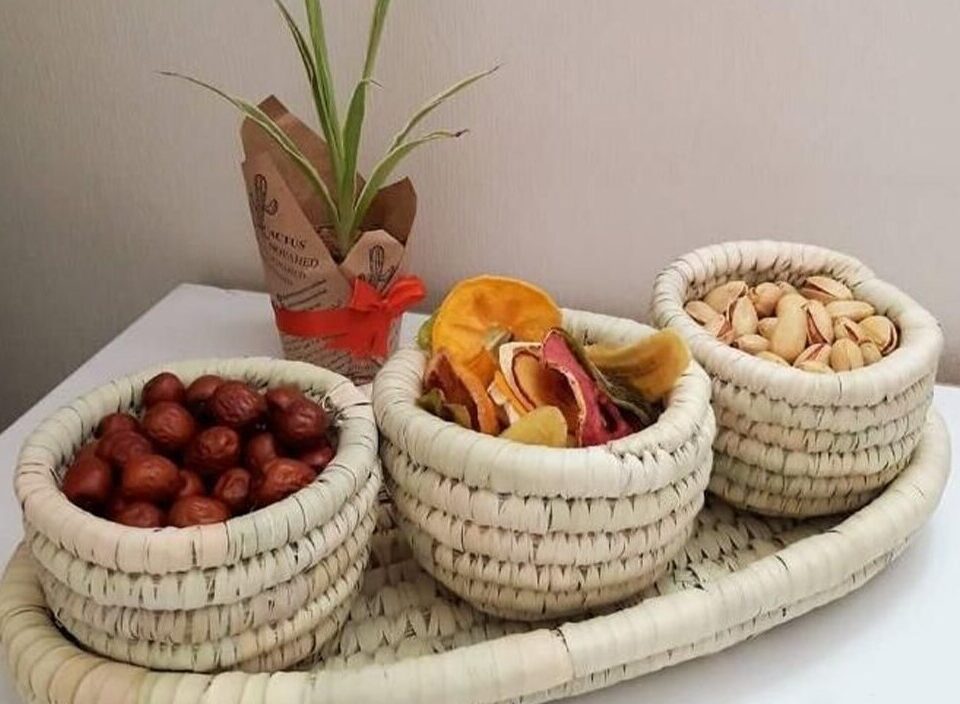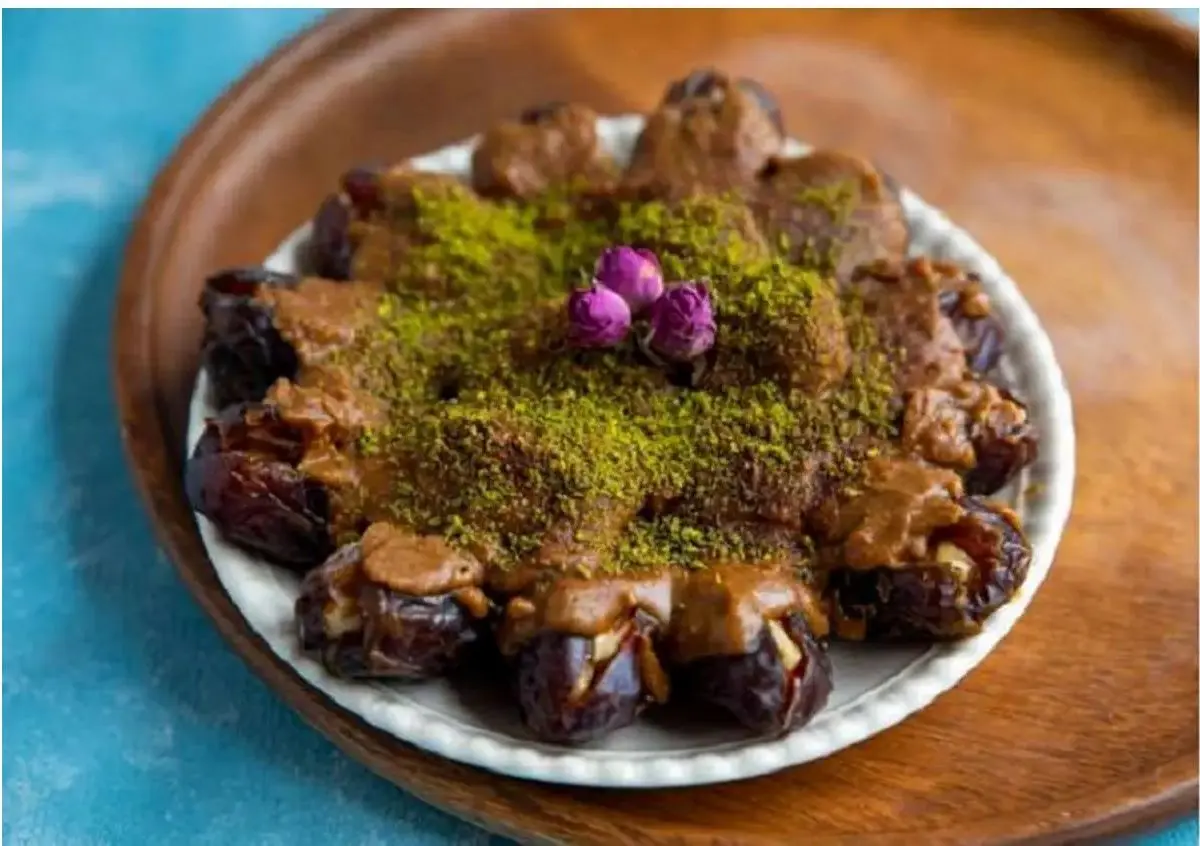
Healthy Iranian Snack Recipes with Nuts and Dried Fruits
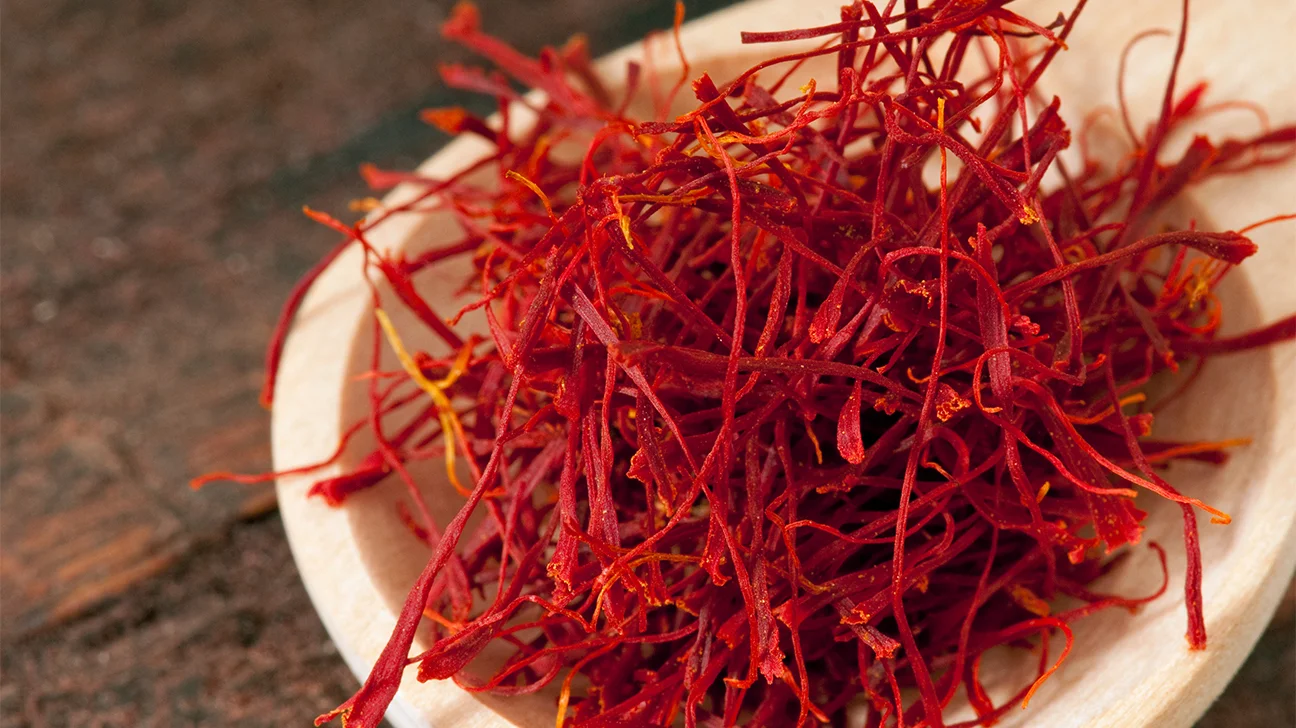
Benefits of Iranian Saffron
Making Fresh Spices from Scratch
Iranian cuisine is known for its rich and aromatic flavors, which are often achieved through the use of freshly ground and blended spices. Preparing and processing your spices at home ensures that they are fresh, fragrant, and full of flavor. Here’s a guide to making fresh Iranian spices from scratch, from selecting the raw ingredients to grinding and storing them properly.
1. Choosing and Preparing Raw Ingredients
The first step in preparing spices at home is to choose high-quality raw ingredients. For most Iranian spices, this means selecting whole seeds, pods, or dried roots, which you can grind into powders as needed.
Key Ingredients for Iranian Spice Blends:
- Cumin seeds
- Coriander seeds
- Turmeric root
- Cardamom pods
- Dried lime (Limoo Amani)
- Saffron threads
- Cinnamon sticks
- Fenugreek seeds
- Sumac berries
- Rose petals
When purchasing these ingredients, look for whole, unprocessed forms, as they retain more flavor and freshness than pre-ground spices.
Preparation:
- Clean the raw ingredients by sifting or lightly rinsing them (if necessary), and let them dry completely before proceeding with grinding.
- Toast spices (optional): Toasting spices like cumin and coriander in a dry skillet over medium heat can enhance their flavor. Toast the seeds for a few minutes until fragrant, being careful not to burn them.
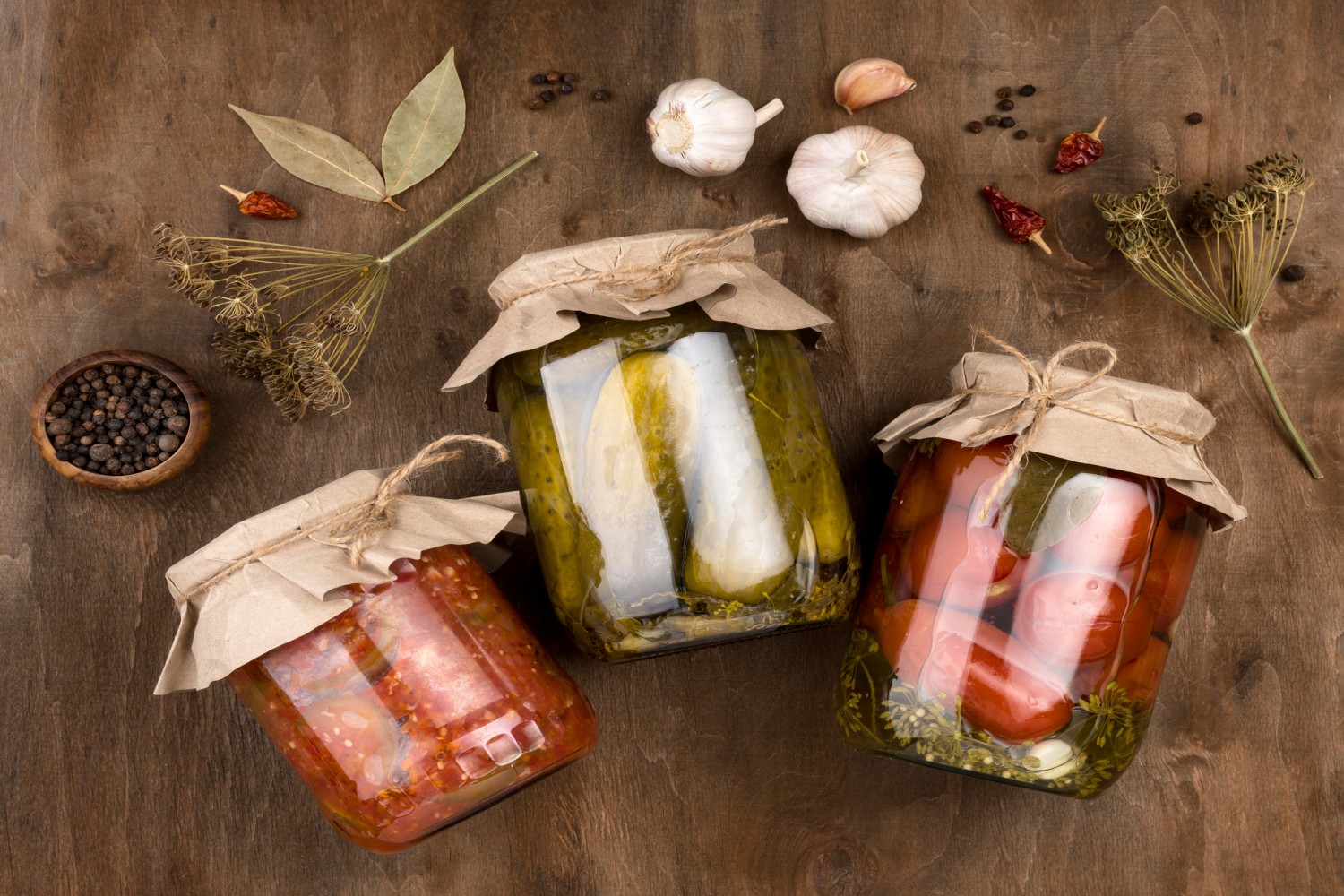
Pickled spices
2. Grinding Spices at Home
Grinding spices at home is key to unlocking their full flavor potential. Here’s how to grind different Iranian spices.
Tools Needed:
- Mortar and pestle: Traditional and effective for smaller batches of spices like saffron or cardamom.
- Spice grinder or coffee grinder: Ideal for larger quantities of spices like cumin, coriander, and dried lime.
- Fine mesh sieve: To sift out any large particles after grinding for a smooth powder.
Grinding Methods for Common Iranian Spices:
Cumin Seeds
- Toast the cumin seeds in a dry pan for 2-3 minutes until they release their aroma.
- Let the seeds cool, then grind them in a spice grinder or mortar and pestle until fine.
- Sift through a fine mesh sieve to remove any coarse bits.
Coriander Seeds
- Toast the coriander seeds as you would with cumin to enhance their flavor.
- Grind the seeds in a spice grinder or with a mortar and pestle until you achieve a fine powder.
- Store the powder in an airtight container.
Turmeric Root
- If using fresh turmeric root, slice it thinly and dehydrate it using a dehydrator or low-temperature oven until completely dry.
- Once dried, grind the turmeric into a fine powder using a spice grinder.
- Turmeric powder should be stored in an airtight container away from light to preserve its vibrant color.
Cardamom Pods
- Lightly crush the cardamom pods to release the seeds. Discard the husks and grind the seeds using a spice grinder or mortar and pestle.
- Cardamom can also be ground along with other spices when preparing blends like Advieh (Persian spice mix).
Dried Lime (Limoo Amani)
- Break the dried limes into smaller pieces and remove the seeds.
- Grind the pieces in a spice grinder until you achieve a fine powder. The powder can be used to flavor soups, stews, and rice dishes.
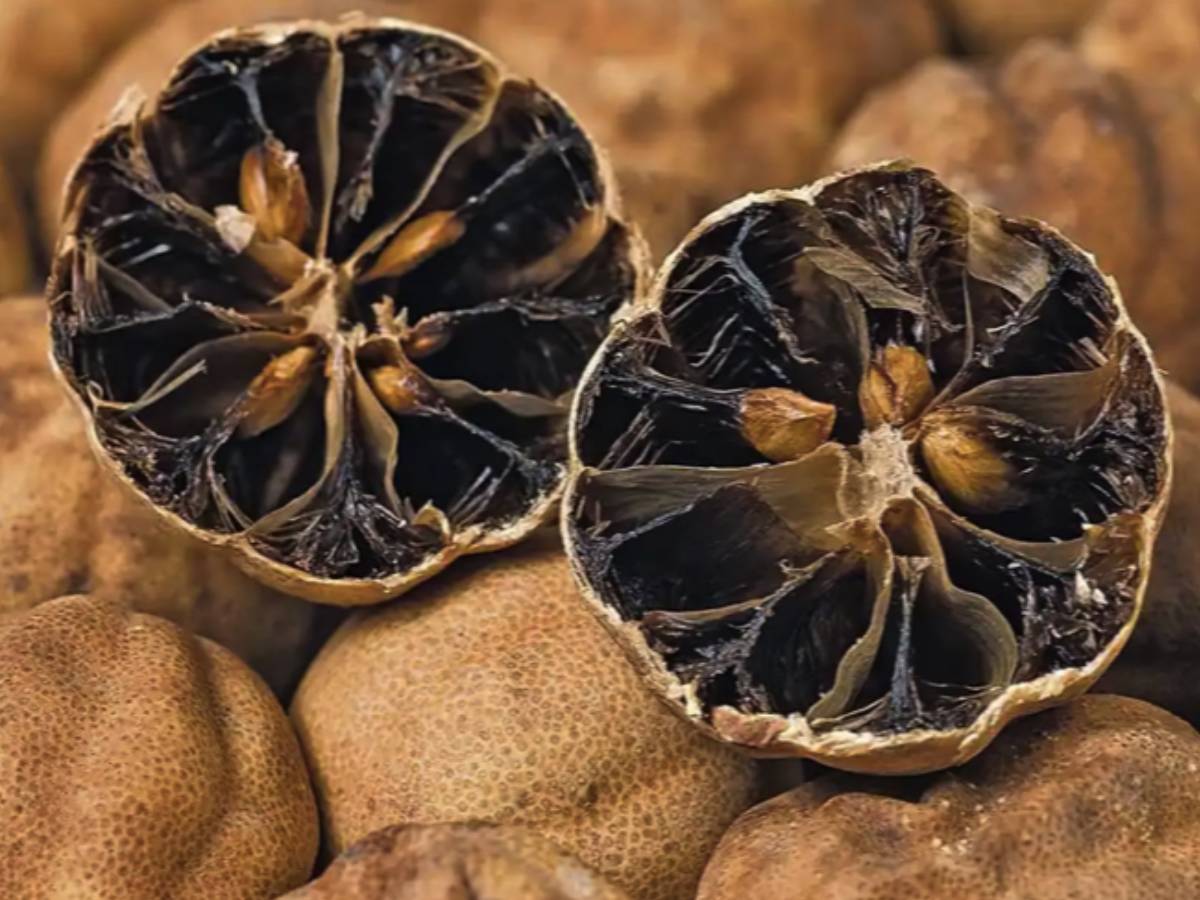
Dried Limes (Limoo Amani)
Saffron
- Crush saffron threads using a mortar and pestle. To release the full flavor of saffron, steep the crushed threads in warm water or milk before adding them to your dish.
Sumac Berries
- Sumac berries can be ground into a coarse powder using a spice grinder. Sumac is often used as a seasoning for grilled meats and salads due to its tangy, lemon-like flavor.
Cinnamon Sticks
- Break cinnamon sticks into small pieces and grind them in a spice grinder. Freshly ground cinnamon is much more aromatic and flavorful than store-bought powder.
Tip:
Always grind spices just before using them for the freshest flavor. Ground spices lose their potency over time, so store whole spices and grind them in small batches as needed.
3. Making Traditional Iranian Spice Blends
Once you have ground your spices, you can use them to create traditional Iranian spice blends that are commonly used in Persian cooking.
Advieh (Persian Spice Blend)
Advieh is one of the most popular spice blends in Iranian cuisine, used to flavor rice, stews, and meats. It typically contains a mix of aromatic spices, often tailored to personal or regional tastes.
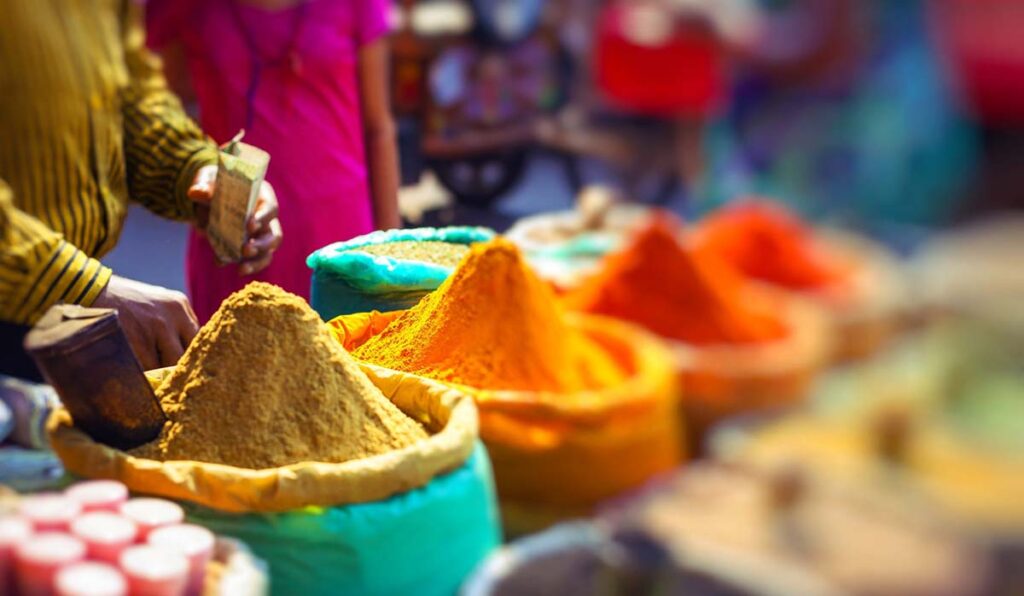
Persian Advieh
Ingredients for Advieh:
- 2 tbsp ground cumin
- 2 tbsp ground coriander
- 1 tbsp ground cinnamon
- 1 tbsp ground cardamom
- 1 tsp ground turmeric
- 1 tsp ground rose petals (optional)
- ½ tsp ground nutmeg (optional)
Instructions:
- Combine all the spices in a small bowl.
- Mix well and store in an airtight container.
- Use Advieh to season rice dishes like Sabzi Polo or Baghali Polo, or add it to stews like Khoresh for a depth of flavor.
Advieh for Stews (Advieh-e Khoresh)
For stews, the Advieh blend can be more specific, incorporating earthy and warming spices that bring richness to slow-cooked dishes.
Ingredients:
- 1 tbsp ground cinnamon
- 1 tbsp ground cumin
- 1 tbsp ground coriander
- 1 tbsp ground turmeric
- 1 tsp dried lime powder (Limoo Amani)
Instructions:
- Mix the spices and store them in an airtight jar.
- Add this Advieh to stews like Khoresht Gheymeh or Khoresht Fesenjan for an authentic Iranian flavor.
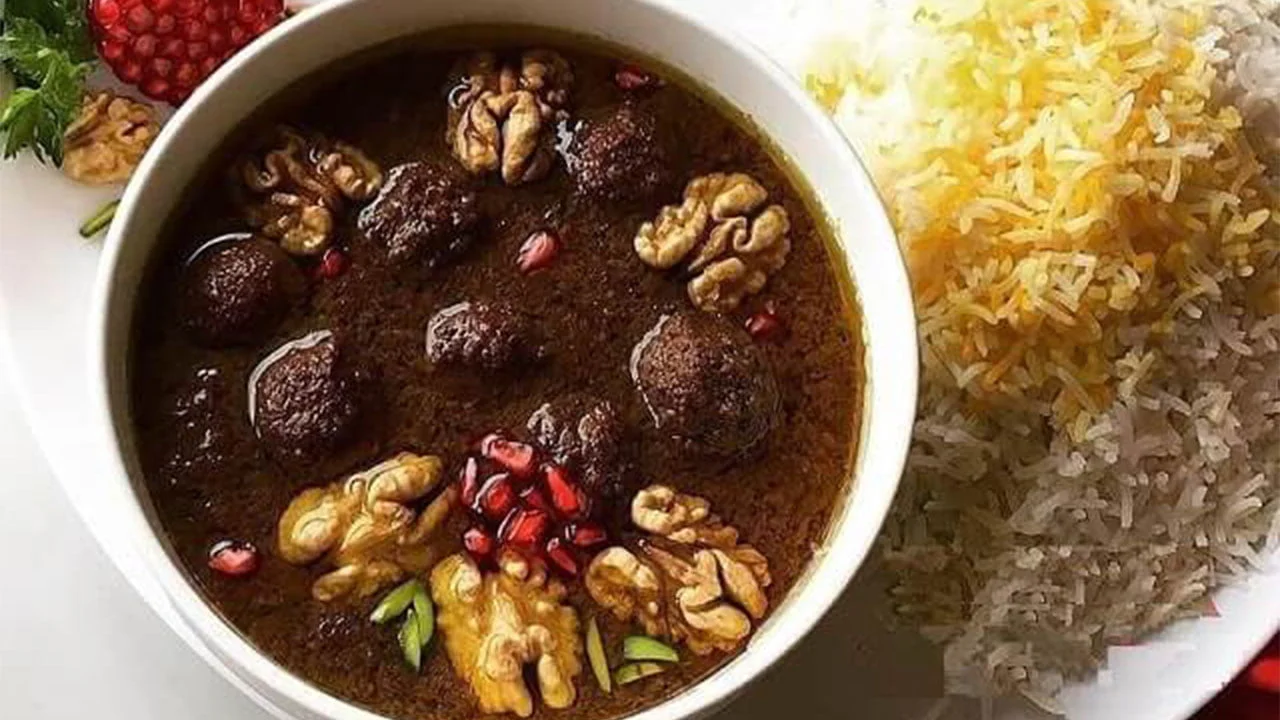
Fesenjan (Pomegranate and Walnut Stew)
Rice Spice Mix (Advieh-e Polow)
Used to add flavor to rice dishes, this blend typically includes aromatic spices and sometimes dried herbs like dill or fenugreek.
Ingredients:
- 1 tbsp ground cumin
- 1 tbsp ground coriander
- 1 tsp ground cinnamon
- 1 tsp ground turmeric
- 1 tsp ground rose petals (optional)
- 1 tsp dried dill or fenugreek leaves (optional)
Instructions:
- Mix the spices and store them in an airtight container.
- Sprinkle over cooked rice dishes like Polow or Tahchin for a fragrant and flavorful twist.
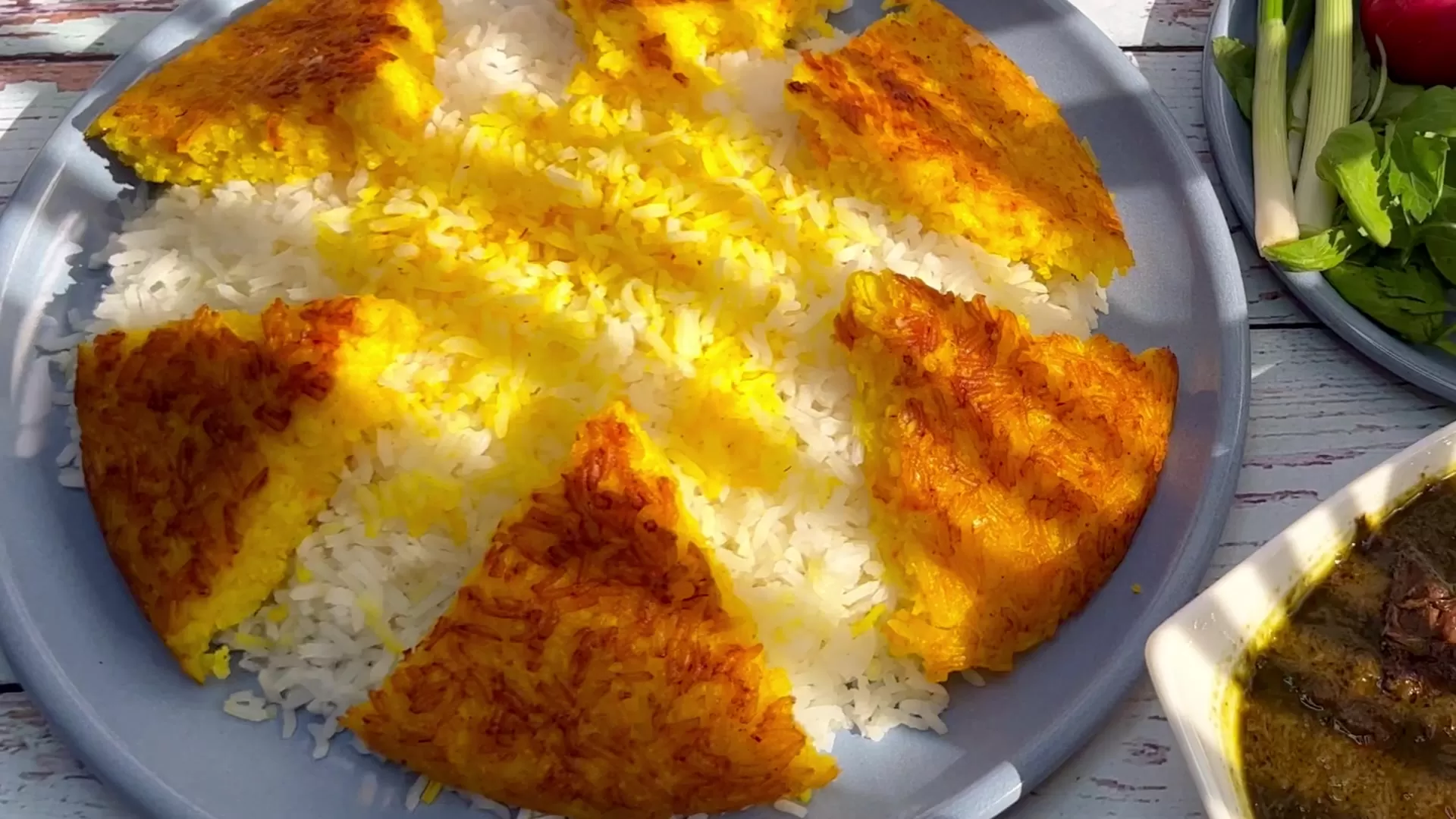
Saffron Rice (Chelo)
4. Storing Freshly Ground Spices
To preserve the freshness and potency of your homemade spices, proper storage is essential.
Best Practices for Storing Spices:
- Use airtight containers: Store spices in airtight containers, such as glass jars, to prevent exposure to air, which can cause spices to lose their flavor and aroma.
- Keep away from heat and light: Store spices in a cool, dark place like a pantry or cupboard. Exposure to heat and light can degrade the essential oils in spices, reducing their potency.
- Label and date: Always label your spice jars with the name of the spice and the date it was ground, so you know when to replace older spices.
- Whole vs. ground: Whenever possible, store whole spices and grind them as needed. Whole spices last much longer than pre-ground ones, retaining their flavor and aroma for up to two years, while ground spices generally last about six months to a year.
5. Using Fresh Spices in Iranian Dishes
Freshly ground spices can enhance the flavor of any dish, but they’re particularly transformative in traditional Iranian recipes. Here are some ideas for incorporating your homemade spices into everyday cooking:
Chelo (Steamed Saffron Rice)
- Infuse freshly ground saffron in warm water and drizzle it over steamed rice for a vibrant, fragrant side dish.
Khoresht Gheymeh (Yellow Split Pea Stew)
- Use your Advieh-e Khoresh blend to season this hearty stew. The combination of cinnamon, turmeric, and limoo amani will give the stew a rich, warming flavor.

Khoresh Gheymeh
Sabzi Polo (Herb Rice)
- Add Advieh-e Polow to herb rice for an extra layer of aroma and complexity, complementing the fresh herbs with warm, earthy spices.
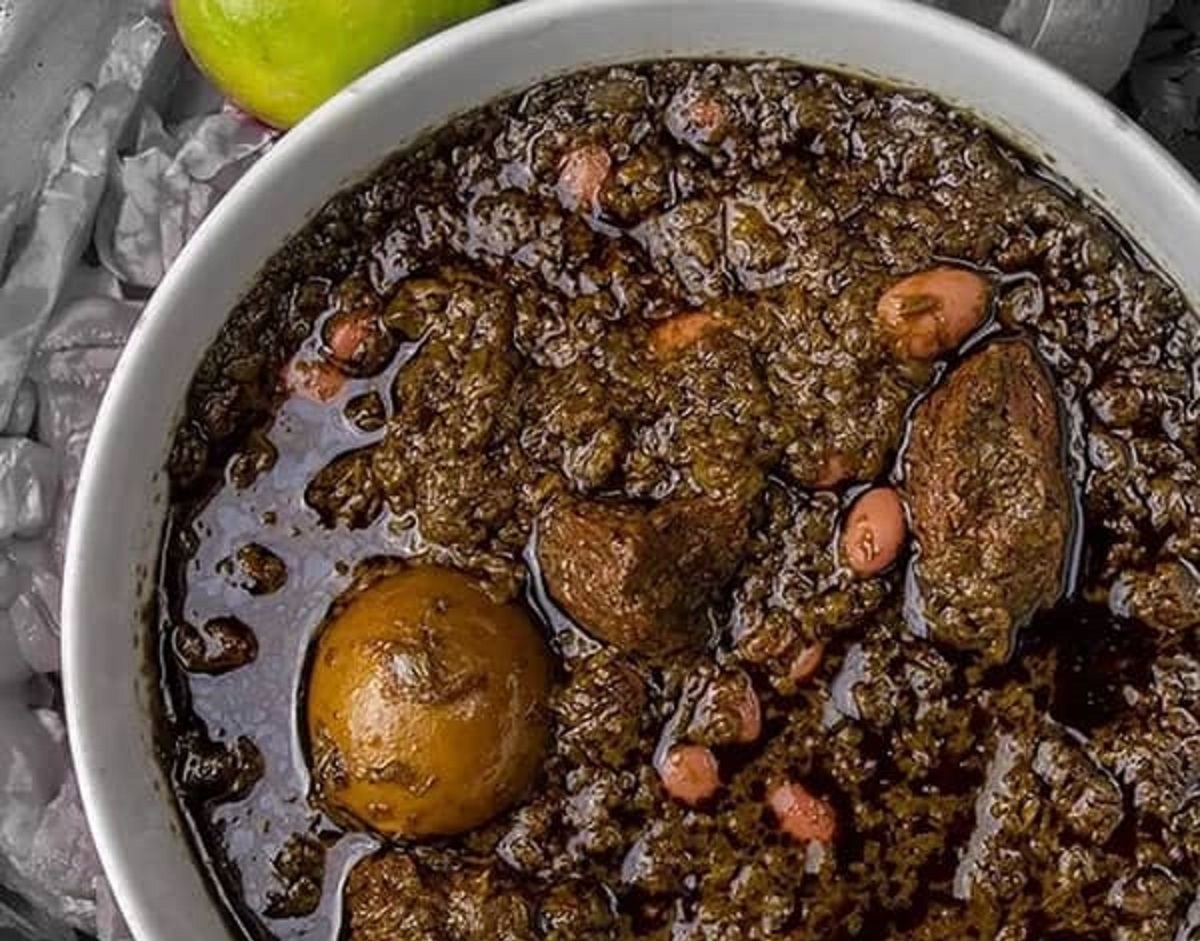
Khoresh Sabzi
Fesenjan (Pomegranate and Walnut Stew)
- Freshly ground cinnamon and turmeric will enhance the nutty, tangy flavors of this beloved Persian stew.
Conclusion
Making your Iranian spices at home not only guarantees freshness and superior flavor but also allows you to control the balance of spices according to your taste. From grinding individual spices like cumin and turmeric to creating traditional blends like Advieh, the process is simple and rewarding. With proper storage and careful preparation, your homemade spices will bring depth, warmth, and authenticity to all your Persian dishes.

